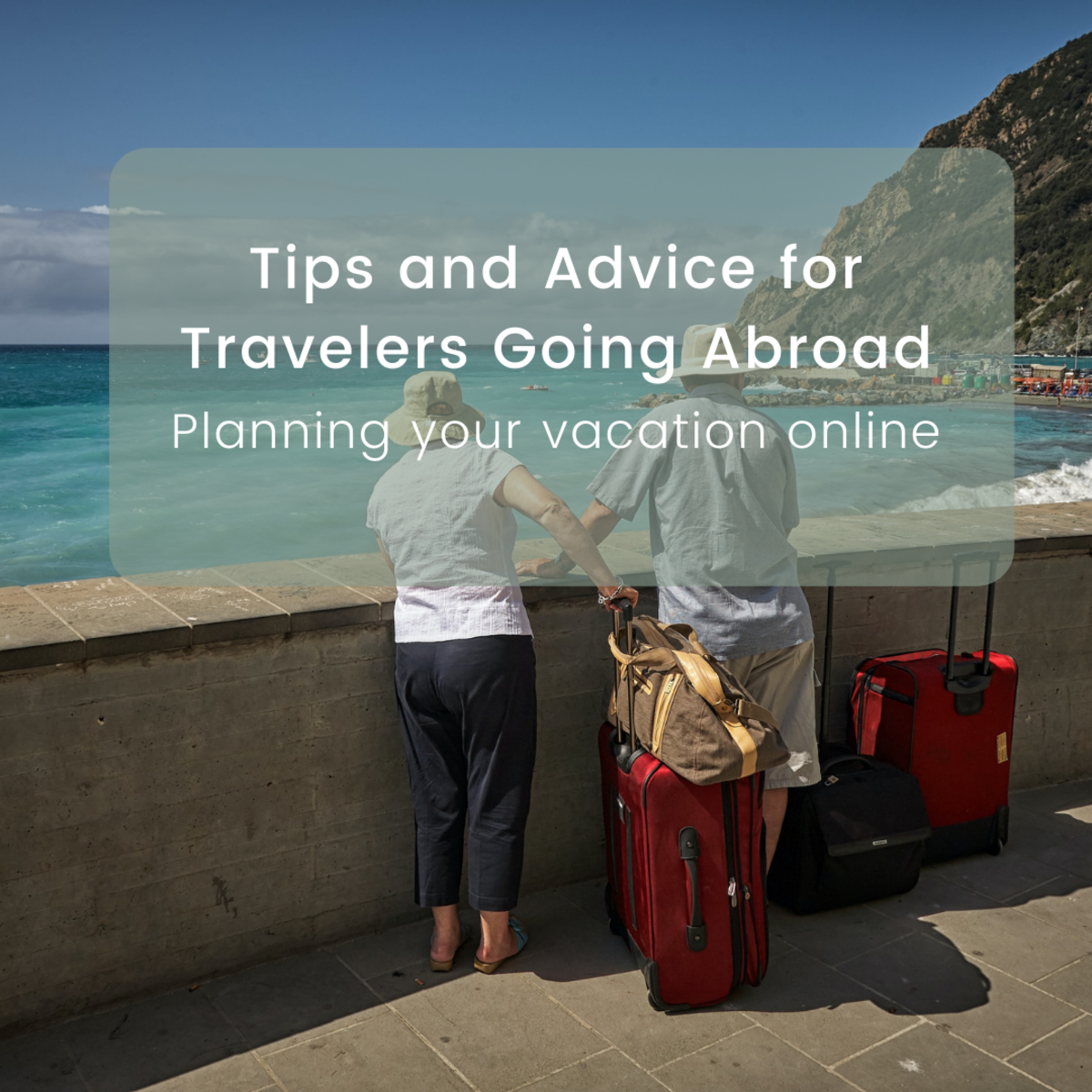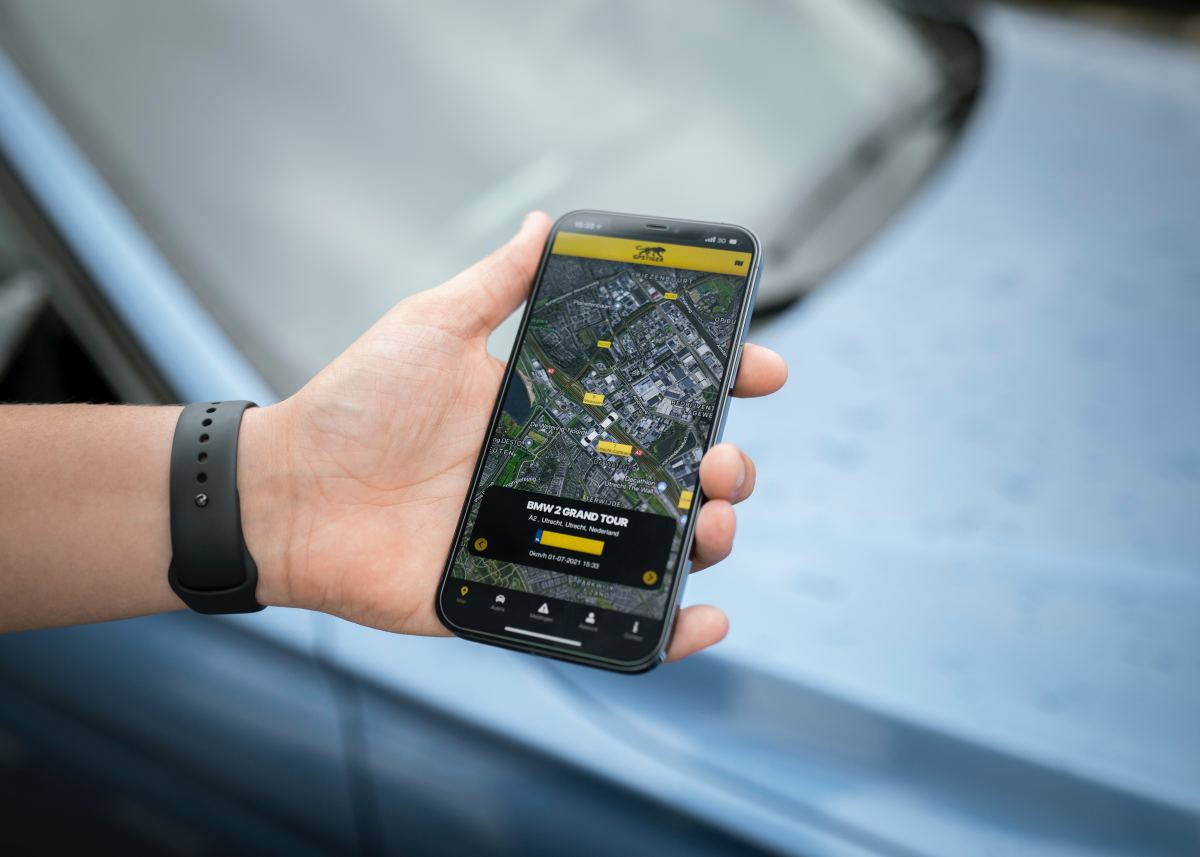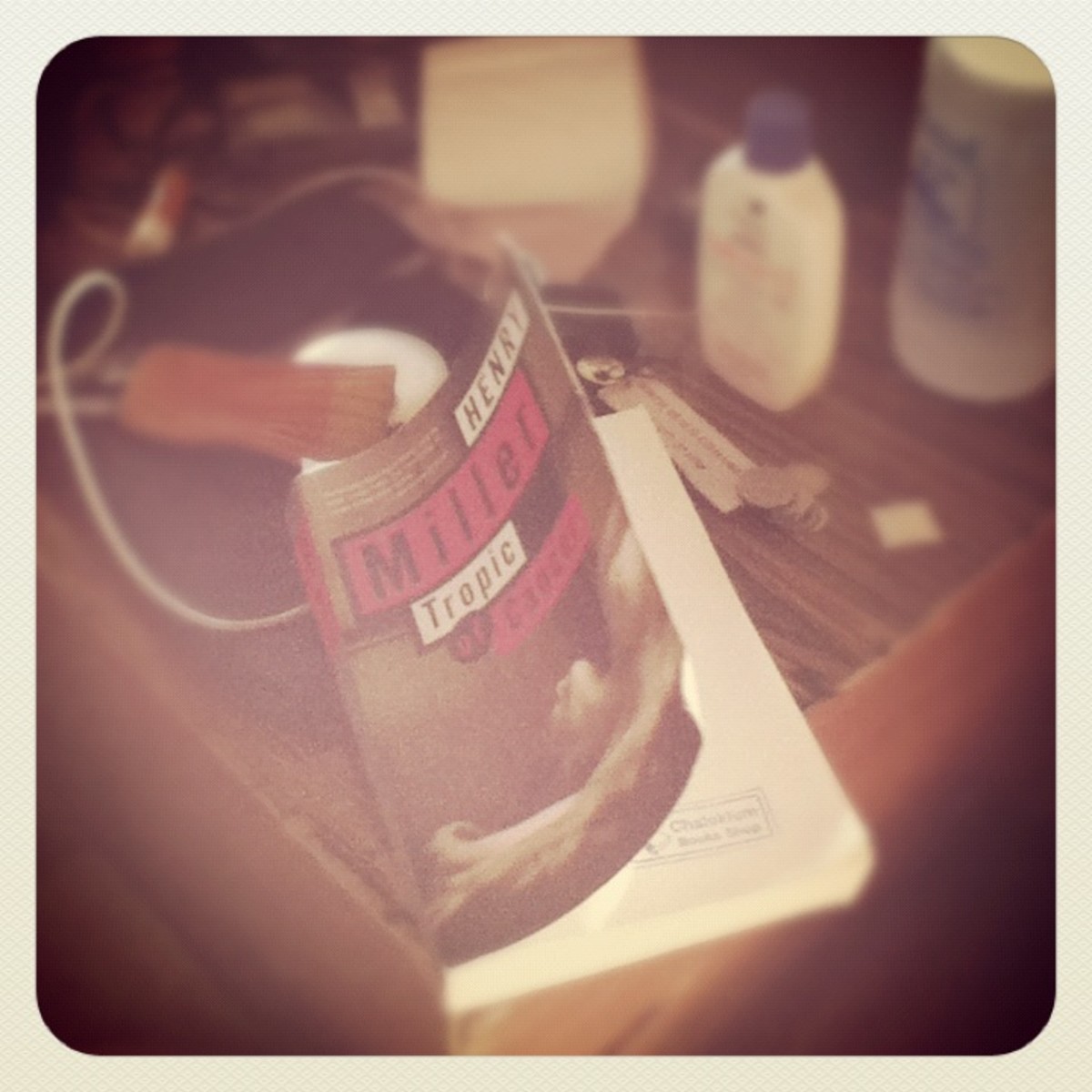- HubPages»
- Travel and Places»
- Travel Tips & Preparation»
- Special Tips for Travel
The Anxious Travelers Guide to Booking a Holiday
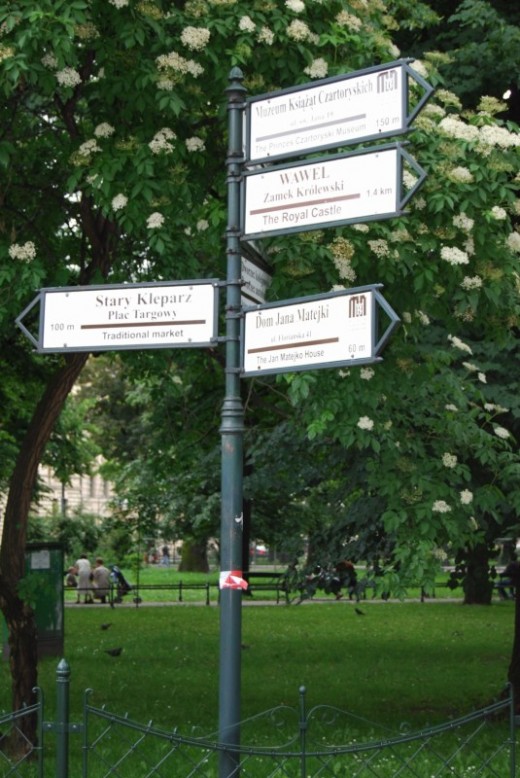
The Anxious Traveler
For some, the prospect of travel to foreign lands is filled with excitement. An opportunity to visit new places, experience new things and have some adventures. For others, the prospect of foreign travel is filled with dread, worry and fear. Experiencing new things can be stressful on its own, add in the fact that these new things will be experienced far from home in a place you do not know, surrounded by a language you do not understand. It can be enough to put you off the idea altogether.
Sound familiar? Then you are not alone.
I've always been an anxious traveler, but I've learned that forcing myself into these stressful situation doesn't help anyone. Instead I focus on finding ways to reduce the stress.
When I'm booking a holiday I want something fun, something I'll look back on with fond memories. Not something that will reduce me to tears.
In this guide I've written down the ten steps I use to help reduce the stress and anxiety I feel when booking a holiday. Perhaps they will help you too.
Each time I plan a holiday I work my way through these steps over the course of, at least, a couple of months. I don't like to rush the planning process. But please feel free to move at your own speed.
It's a good idea to get yourself a notebook that you can use to complete these tasks.
Choose a Partner

Step 1 - Choose Someone to Travel With.
This will be the most important element in reducing your stress levels when travelling. The best advice I could give you is to travel to a new city with someone who comes from that city. Which of course isn't always possible.
Failing that, choose someone who you feel comfortable with, your sister, best friend, boyfriend etc. your travelling partner should be someone you trust and who understands that this trip may not be easy for you. Talk to them about how you feel. Make sure they know that you may need to hold their hand. That sometimes you might need to take a pause to get your bearings. Above all, make sure that they are willing to support you.
Having a travelling partner that is happy to give you positive encouragement will be a huge benefit when the stress does start to get a little high. From here on out I'll be referring to your sister, mother, brother, uncle or whomever you have chosen to travel with as your partner. Because that's what they are. You are now a little team.
Step 2 - Choosing Where to Go
Is there somewhere you've always wanted to visit? Somewhere your family wants to go? If you already know where you want to visit, skip to step 3.
But if you haven't decided yet, your first step should simply be to write a list (this is where the pen and paper come in handy).
Your Task: Write a list of what you want to get out of your holiday, and what you want to avoid.
You could write this with your partner, or separately. But make sure to compare both lists before moving onto the next step.
Here's mine, feel free to use it, adapt it, or completely ignore it.
Wants and Don't Wants
Want
| Don't Want
| Budget
|
|---|---|---|
Yummy food
| To get sun burn
| £400
|
Clean place to stay
| to be too hot
| |
Water that is safe to drink.
| sea food
| |
People speak English or French
| A language I don't understand
|
Now that you have a list of wants and don't wants, you can look for a country and city that matches up. Discuss this with your partner until you've both chosen somewhere to go.
Once you've decided, move onto step 3.
Step 3 - Buy a Guide Book
Guide books are the perfect place to start planning your trip. I usually go for the Lonely Planet guides as I find them easy to use and full of useful information. They have information about places to visit and things to eat as well as historical information about the place.
Get your guide book as far in advance as possible, I usually aim for a year. This gives me time to read it at my leisure and learn all about the new place.
Your Task: Read through your guide book at your own speed, and note down anything of interest.
These notes will be what we use later to plan your trip. You can can do this with your partner, or by yourself.

Step 4 - Choosing Activities
So now you have a notebook full of interesting facts and things to do. But before you even think about booking anything, you're going to want to come up with a loose itinerary of things to do on your holiday. This is where your guide book will come in handy. You can do this alongside your partner, or individually.
Your Task: Make a list of all the things you think would be fun.
Don't worry about when and how you're going to do them right now, we'll get to that later.
This list doesn't just need to consist of historical or touristy attractions. Try adding in a few small things too, like eating a crepe, or sunbathing. This will make it easy to cross things off your list of activities and add to your sense of achievement as your holiday goes on.
Here's my list from my trip to Paris. Feel free to use it, adjust it or create a brand new one.
- Climb to the top of Notre Damn
- Eat a Crepe
- Visit Disney land
- Take a picture of the Eiffel tower
If you've written your list on your own, make sure to consult your partner before the final list is completed. They may be there to support you, but it is their holiday too. And they might have thought of something you haven't.
If your partner wants to do something that you absolutely cannot handle, then don't worry, you're not joined at the hip.While they're bungee jumping off a bridge, you can be relaxing in your hotel room or people watching from a cafe.
A Map Of Paris
Step 5 - Choosing the location of your hotel.
Now that you've picked some activities you want to do, this information will help you choose the best location for your hotel. It's time to get a map. If you chose a lonely planet guide, you'll find a pull out map at the back of the book. If not, hit up Amazon or your local travel agents to get your hands on a map of your chosen city.
Done that? Great, Now I'd like to introduce you to Google, your new best friend.
You can plot out all of the activities you would like to do on your map. I prefer to do this on a physical map so I can actually draw on top of it. But you could also use the pins in Google maps to do this.
Your task: Look up the location of each activity and draw it on your map.
Now you have a birds eye view of where in the city you're going to have to get too. You can start to look for hotels that are nearby your chosen activities.
At this point I should point out that the closer to tourist attractions you look, the more expensive your hotel choices will be. However, if you find travelling around a strange city a cause for stress, the less travelling you need to do the better. In this case I feel that a little extra money is well worth the luxury of being able to walk back to your room instead of taking two trains and a bus.
Perhaps you could cope with one train journey? Or maybe you could handle two. Be honest with yourself and with your partner about what you think will suit you best and choose an area that you would feel comfortable with.
Step 6 - Choosing a hotel
You know where you want to stay. Now you have to choose one of the hotels in that area. There may only be one or two, or there might be hundreds. So to narrow it down it helps to make another list of your requirements,
Your Task: Write a list of your requirements, include your budget and any services you need.
Here is a copy of my list:
Budget: £50 per night
Inside
| Outside
| |
|---|---|---|
private room double bed en suite toilet and shower clean sheets/bedding in house entertainment - a hotel bar or lounge will suffice, secure entry system, kettle, fridge
| short walk to metro system near a nice cafe or restaurant within walking distance of Notre damn
| |
Other possible items for your list could be things such as,
breakfast lunch or dinner provided by hotel, bath tub, family room, single beds, double bed. Whatever you need.
Keep in mind the more items you have on your list the harder to find and more expensive your hotel will be. however, for the anxious traveller, a little extra time and money can make all the difference between having a lovely holiday and having a horrible time.
Chain hotels like the Travel Inn, or (if you're feeling extravagant) the Hilton, tend to be very similar wherever you go in the world. Sometimes knowing what to expect when you arrive can help to take some of that anxiety away.
Now that you know your requirements it's time to visit with our old friend Google (or any other search engine you prefer) and do a little research on the hotels in your chosen area. Make a list of possible hotels or hostel, marking each option with its compatibility to your needs. By the end of this process you should have a good idea of which hotel you should be staying in.
Obviously the hotels availability will be a factor, but we'll get to that in one of the later steps.
Make a note of the top two or three hotels and their websites, but don't book anything just yet. We've still got a little bit of planning to do.
Step 7 - Choosing when to go
This is a pretty important question, and will have a big impact on your trip. The question of when to travel has a number of factors.
Your Task: Look at the following elements, discuss them with your partner, and choose a time that suits you both.
Peak and off peak - As an anxious traveler I would recommend, going on holiday during off peak times. This means prices will be slightly cheaper, and places won't be as busy. Obviously this isn't an option for everyone. But it's something to consider.
Availability: Look again at the activities you want to do. Do any of them close at certain times in the year? This will play a part in choosing when to travel.
Weather: Look up weather in your chosen city. You'll be able to find weather reports for the last few years online to give you an idea of what to expect.
I personally don't do so well in really hot climates, so visiting Paris in August, is a no no. The heat is pretty intense. Maybe you don't really like the rain, so you'll want to avoid months that get heavy rain fall.

Step 8 - Decide How Long to Stay
I would recommend four days. I find four days is enough time to see lots of different things, and isn't long enough to start really feeling home sick.
But you may feel differently, so before making this decision look back at the lists you've already made.
Your Task: Make a rough schedule of when you will do each of your activities.
How many different activities have you chosen to do? And how long will you need to do them?
I would recommend choosing two activities per day, one for the morning and one for the afternoon/evening. This way you avoid racing around the city and don't add unnecessary stress.
For me a loose schedule works best. I only have a couple of things to achieve each day.
Day 1
| Day 2
| Day 3
| |
|---|---|---|---|
Activity 1
| Arrive. Get to hotel, get settled
| Disney land
| Notre Dame
|
Activity 2
| See the Eiffel tower
| Disney land
| Eat a crepe
|
For others a more detailed schedule may be necessary, talk to your partner about what would make things easier on both of you.
Would you prefer to schedule three activities per day? Maybe you'd like to have a day where you plan to do nothing.
Make a rough schedule of the activities you want to do.
Now you know how many days you need, you can look at the other criteria. How many days can you afford? How much does your chosen hotel charge? Do they match up? Or are you going to have to re-think a few things.
Maybe you could push yourself to stay in a slightly cheaper hotel? Or maybe you could loose a few things from your to do list? It's up to you and your partner to discuss what is best for both of you.
You've chosen a place, a time, and a hotel. But don't book anything just yet. You've got one more thing to think about. How are you going to get there?
Step 9 - Choose how to get there
So you know where you're going and for how long. That means you'll be able to look into your transport options. Depending on where you are visiting, you'll have a number of options.
Your Task: Write a list of all possible options, include space for the pros, cons, ticket prices and duration. (Google is a pretty handy little friend)
My list looks a little like this.
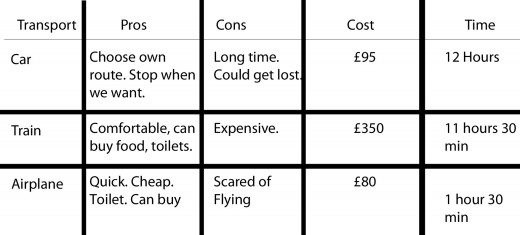
Once you've written it all down, talk it over with your partner, and choose the option that suits you both.
In the end we opted for the plane, and I used my tricks for dealing with flights (that's a whole other article) to get myself on board.
You've decided where to go, when to go, how long to stay, which hotel and how you're going to get there. Well done, It's time for step 10
Step 10 - Booking your holiday.
Sometimes this can be the scariest part. It's no longer just a day dream. You're going to hand over your hard earned cash, and the holiday is happening.
Remember, that you're not doing this on your own. You have your partner, and you've done all the prep work. You are all set to book your wonderful, enjoyable, holiday.
Well done! You've made the decisions, you've planned out your trip. Now take a deep breath, and book your holiday.
Happy travels everyone
L
© 2016 L C Forest


